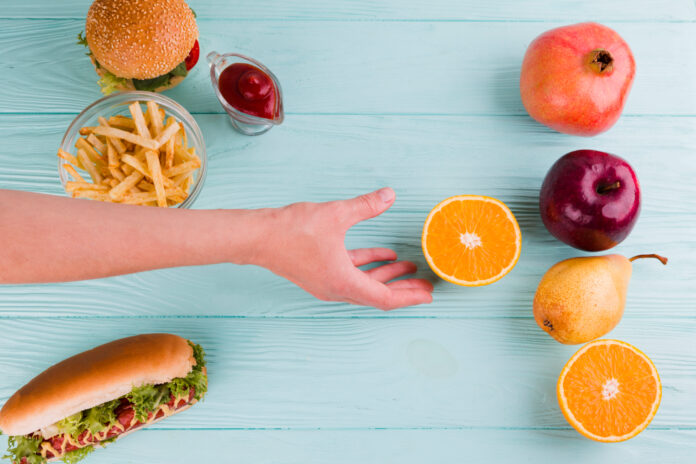Building a bigger, stronger butt involves more than just targeted workouts; it requires a strategic approach to nutrition as well. To achieve optimal glute growth, you need to fuel your body with the right nutrients that promote muscle repair, enhance recovery, and support overall muscle development. This article provides an in-depth look at the foods that can help you achieve your goals, offering practical advice and insights to make your diet work for you.
Understanding the Role of Nutrition in Glute Development
Before diving into specific foods, it’s essential to understand how nutrition influences muscle growth. When you engage in strength training, especially exercises targeting the glutes like squats and lunges, your muscles experience tiny tears. These tears are repaired through the body’s recovery processes, during which your muscles grow bigger and stronger. Proper nutrition provides the necessary building blocks for this repair and growth.
1. Lean Proteins: The Foundation of Muscle Building
Examples: Chicken breast, turkey, lean beef, fish.
Why They Help: Proteins are vital for muscle repair and growth. They provide the amino acids needed to rebuild muscle tissue after workouts. Lean proteins, in particular, are low in fat, making them an excellent choice for muscle-building without unnecessary calorie intake. Incorporate these proteins into your diet to support the development of larger, stronger glutes.
How to Include Them: Aim for a source of lean protein at every meal. For example, enjoy grilled chicken breast with a side of vegetables for lunch, or opt for baked salmon with quinoa and greens for dinner.
2. Eggs: A Nutritional Powerhouse
Why They Help: Eggs are packed with high-quality protein and essential amino acids that play a crucial role in muscle repair. The yolks are rich in healthy fats and vitamins such as vitamin D, which is important for bone health and muscle function. Additionally, eggs contain choline, which supports muscle cell structure and function.
How to Include Them: Incorporate eggs into your diet by preparing them in various ways—scrambled, poached, or as an omelet with vegetables. For a quick snack, hard-boiled eggs are a convenient option.
3. Quinoa: A Complete Protein Source
Why It Helps: Quinoa is unique among plant-based foods as it contains all nine essential amino acids, making it a complete protein. This is particularly beneficial for muscle growth. Additionally, quinoa is a good source of complex carbohydrates, providing sustained energy for intense workouts.
How to Include It: Use quinoa as a base for salads, or as a side dish in place of rice. Combine it with lean proteins and vegetables for a balanced meal.
4. Greek Yogurt: Protein and Calcium Rich
Why It Helps: Greek yogurt offers a high protein content, which supports muscle repair and growth. It’s also rich in calcium, which is essential for muscle contraction and bone health. Opting for plain, low-fat Greek yogurt helps avoid added sugars that can contribute to unwanted weight gain.
How to Include It: Enjoy Greek yogurt as a breakfast option or snack. Add fresh fruit, nuts, or a drizzle of honey for added flavor and nutrients.
5. Sweet Potatoes: Fuel and Nutrients
Why They Help: Sweet potatoes are an excellent source of complex carbohydrates, which provide long-lasting energy needed for workouts. They are also rich in vitamins A and C, potassium, and dietary fiber, all of which support overall health and muscle function.
How to Include Them: Roast sweet potatoes as a side dish, add them to soups, or mash them for a nutritious alternative to traditional mashed potatoes.
6. Nuts and Seeds: Healthy Fats and Protein
Examples: Almonds, chia seeds, flaxseeds.
Why They Help: Nuts and seeds are rich in healthy fats, protein, and fiber. The fats in nuts and seeds support hormone production, which is crucial for muscle growth. They also provide protein to aid in muscle repair and recovery.
How to Include Them: Add nuts and seeds to smoothies, yogurt, or salads. A handful of almonds or a sprinkle of chia seeds can be a nutritious snack or meal addition.
7. Salmon: Omega-3 Fatty Acids for Muscle Recovery
Why It Helps: Salmon is high in omega-3 fatty acids, which have anti-inflammatory properties that aid in muscle recovery. Additionally, salmon is an excellent source of protein, supporting muscle repair and growth.
How to Include It: Enjoy salmon grilled, baked, or as part of a salad. Aim for at least two servings of fatty fish per week to reap the benefits of omega-3s.
8. Avocados: Healthy Fats and Essential Nutrients
Why They Help: Avocados are packed with monounsaturated fats, which support hormone production necessary for muscle growth. They also contain potassium, which helps maintain muscle function and prevents cramps.
How to Include Them: Use avocados in salads, spread them on toast, or add them to smoothies for a creamy texture.
9. Legumes: Plant-Based Protein and Fiber
Examples: Lentils, chickpeas, black beans.
Why They Help: Legumes provide a good source of plant-based protein and fiber. They support muscle growth and offer essential nutrients like iron and magnesium, which are important for muscle function and recovery.
How to Include Them: Prepare legume-based soups, stews, or salads. Incorporate them into your meals as a protein-rich alternative to meat.
10. Oats: Complex Carbs for Energy
Why They Help: Oats provide complex carbohydrates, which offer sustained energy for workouts. They also contain protein and fiber, supporting muscle health and digestion.
How to Include Them: Start your day with oatmeal, or use oats in smoothies and baked goods. Oats can be a versatile addition to many recipes.
Conclusion
To effectively build a bigger and stronger butt, incorporating the right foods into your diet is crucial. By focusing on lean proteins, healthy fats, complex carbohydrates, and nutrient-dense foods, you can support muscle growth and recovery. Pair these dietary strategies with a well-rounded exercise routine, and you’ll be on your way to achieving your glute goals. Remember, consistency is key, so make these foods a regular part of your diet to see the best results.
